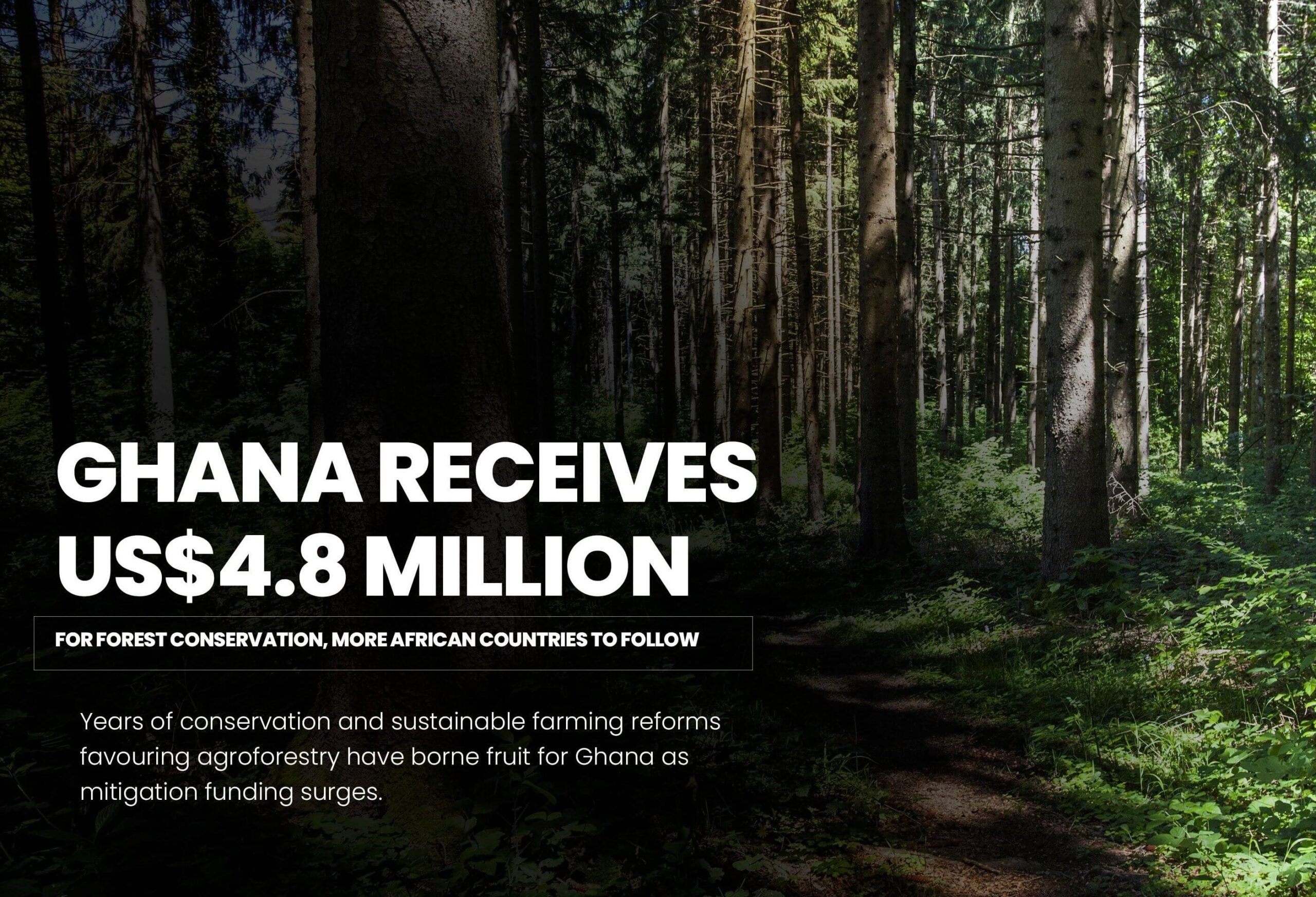On January 24, 2023, Ghana was unveiled as the second African country after Mozambique to receive payments from the World Bank’s Forest Carbon Partnership Facility (FCPF).
Ghana received US$4,862,280 for reducing 972,456 tons of carbon emissions between June and December 2019, the first monitoring period of the program.
According to Pierre Laporte, World Bank country director for Ghana, Liberia, Sierra Leone, and Ghana could receive up to US$50 million for 10 million tons of CO2 emissions by 2024.
“This payment is the first of four under the country’s Emission Reductions Payment Agreement (ERPA) with the World Bank to demonstrate potential for leveraging results-based payments for carbon credits,” he explained.
Ghana’s minister of lands and natural resources, Samuel Jinapor, said that independent validation and verification processes were also ongoing for the payment of the second tranche, covering the monitoring period from January 2020 to December 2021.
In the Ghana Cocoa Forest REDD+ Programme, GCFRP, a comprehensive plan submitted as part of the agreement, 69% of the payments will be directed to support local communities involved in the emission reduction programmes.
Jinapor added that the payments “will promote confidence in Ghana’s REDD+ process for action to reduce deforestation and forest degradation.”
According to Roselyn Fosuah Adjei, the Director for Climate Change and Ghana’s REDD+ Coordinator, communities are “developing their work plans in consultation with partners to execute allocations from the fund.”
While Ghana, the world’s second-largest producer of Cocoa, makes a significant economic fortune from the crop, it is also one of the country’s main causes of deforestation and forest degradation.
Commonly referred to as the Cocoa Forest Landscape, the region is known for hosting vast cocoa plantations besides being home to a range of biodiversity.
When US$6.4 million was paid to Mozambique in 2021, the money was used to implement REDD+ programs in Zambézia Province: Alto Molocue, Gile, Gurue, Ile, Maganja da Costa, Mocuba, Mocubela, Mulevala and Pebane.
Following on the heels of Mozambique and Ghana, Madagascar, the Democratic Republic of Congo (DRC), Cameroon, the Republic of Congo, and Ivory Coast have the most potential to turn conservation into dollars out of a pool of 15 African countries in the programme.
DRC and Cameroon are the oldest signatories in the group, having signed their Carbon Fund agreements in 2018 and 2019, respectively. The payment program goes through a rigorous 8-stage process, including assessment of core elements and due diligence on the technical and programmatic aspects of the various projects.
Ghana’s funding comes a few months after it received a US$3 million grant from World Bank under a new trust fund, Enhancing Access to Benefits by Lowering Emissions or EABLE.
Africa is committed to cutting 32% of emissions by 2030, with Ghana promising to cut carbon emissions by 64 metric tons of carbon dioxide equivalent (MtCO2e) by 2030.
However, for Adjei, the greatest beneficiaries of the payments are those actually doing the conservation on the ground.
“This will be used to realize Ghana’s ambitious zero-deforestation goals while making sure benefits reach key stakeholders who have contributed to this milestone for sustainable forest management,” she noted.
bird story agency
On January 24, 2023, Ghana became the second African country, after Mozambique, to receive payments from the World Bank’s Forest Carbon Partnership Facility (FCPF). Ghana received $4.86 million for reducing 972,456 tons of carbon emissions between June and December 2019.
World Bank country director Pierre Laporte stated that Ghana, Liberia, and Sierra Leone could receive up to $50 million for 10 million tons of CO2 emissions by 2024 through the Emission Reductions Payment Agreement (ERPA). Ghana's independent processes are ongoing for a second tranche covering January 2020 to December 2021.
The Ghana Cocoa Forest REDD+ Programme will allocate 69% of payments to local communities involved in emission reduction programs. Ghana's land and natural resources minister, Samuel Jinapor, emphasized that the payments would encourage confidence in Ghana’s REDD+ efforts to fight deforestation and forest degradation. Roselyn Fosuah Adjei, Ghana’s REDD+ Coordinator, noted that community work plans are being developed.
Other countries with potential for similar conservation payments include Madagascar, Democratic Republic of Congo (DRC), Cameroon, Republic of Congo, and Ivory Coast. The DRC and Cameroon signed their Carbon Fund agreements in 2018 and 2019. The payment program involves a thorough 8-stage process for project assessment.
In addition to the carbon payment, Ghana recently received a $3 million grant under the World Bank’s new trust fund, EABLE. Africa aims to cut 32% of emissions by 2030, with Ghana targeting a reduction of 64 MtCO2e by 2030. Adjei highlighted that the ground-level conservationists are the main beneficiaries of these payments, aiding Ghana’s zero-deforestation goals.






